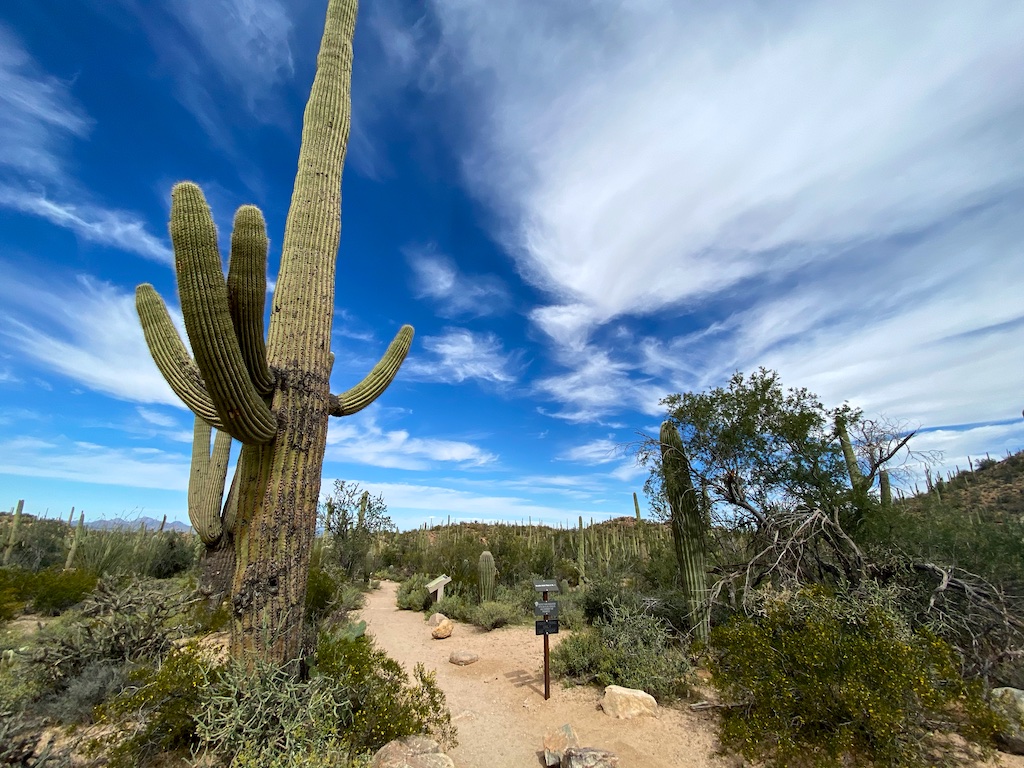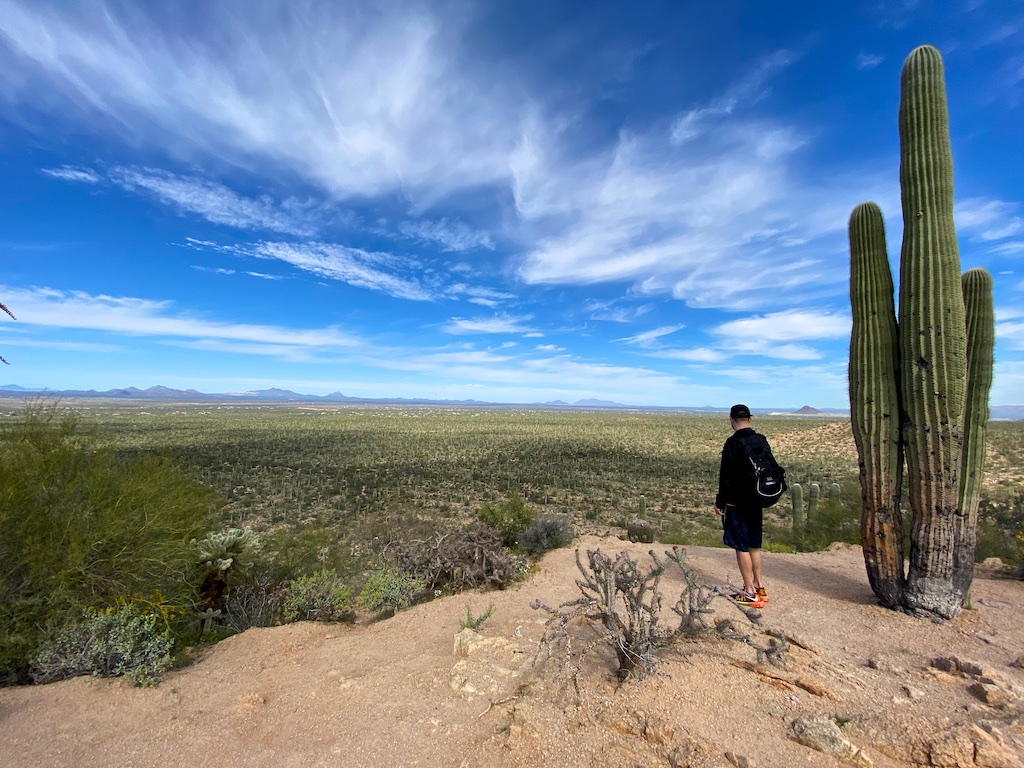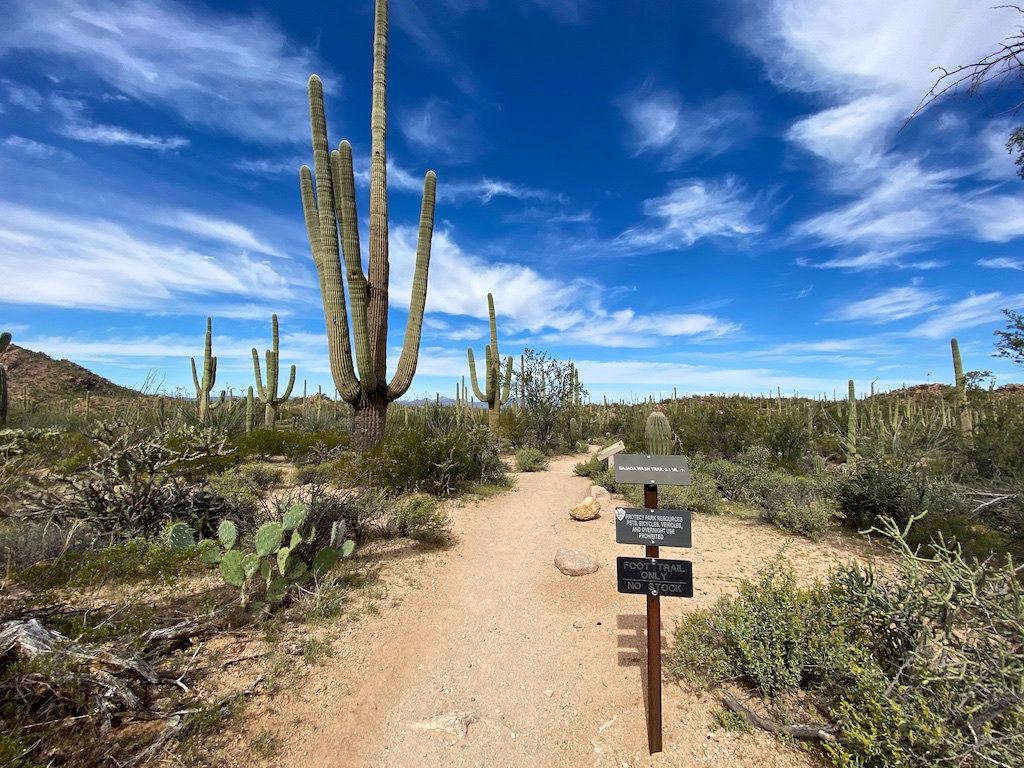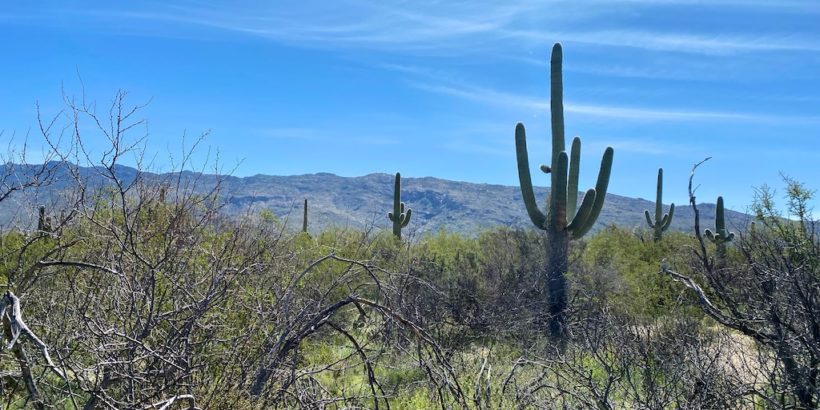If you ask me, the saguaro cactus (pronounced “suh-wahr-oh”) might be the most iconic symbol of the American Southwest. It’s on TV shows, cartoons, and on all sorts of signage and memorabilia. When you see the saguaro’s profile, you automatically conjure up images of the wild west.
These cactuses are very interesting and have many notable and fascinating qualities. In this article, I will share some impressive facts about these beautiful plants.
Tip: Use WalletFlo for all your credit card needs. It’s free and will help you optimize your rewards and savings!
Table of Contents
1. A limited home
Saguaro cactus are found exclusively in the Sonoran Desert.
This means that you will only find these cactuses in southern Arizona, the western region of the state of Sonora, Mexico, the Baja California peninsula of Mexico, and in southeastern California.
Saguaro cactus will grow from sea level to about 4,000 feet in elevation. As you move up in the northern range of the saguaro habitat and at higher altitudes, you will find them more plentiful on the warmer, south sloping faces of mountains and hills.
2. They grow to be very old
A saguaro cactus can grow to be very old.
Many live to about 175 years old but there is at least one report of a saguaro cactus, dubbed “Old Granddaddy,” living to close to 300 years old!
It takes a saguaro cactus about 100 years to develop its first arm and about 200 years to reach its full height.
So as you’re trekking through a saguaro cactus forest, think about how long many of those cactuses have been on the planet for and all of the wars and discoveries they have been around for. It’s pretty remarkable, though not quite on the level of the redwoods.

3. Skyscrapers
Saguaro cactus can be among the tallest cactus that you will ever find. These cactus often grow up to 30 to 45 feet and the tallest saguaro cactus ever known towered over 78 feet!
If you see these cactus from the roadways, you may not be able to appreciate their massive size. Step out of your vehicle and stand right under one of these and you will instantly comprehend how massive they can be.

4. Slow growers
The saguaro cactus grows as a column at a very slow rate. The growth takes place at the top of the cactus and it is remarkably slow. For example, it can take the cactus 10 years just to reach 1 inch in height!
This is one reason why these cactuses are so protected in this region because it takes them so long to grow to their impressive heights.
5. Apartment buildings
Saguaro cactuses are also sometimes jokingly referred to as “high-rise desert apartments.”
That’s because they act as dwellings for certain animals like Gila woodpeckers that are known to carve holes within the cactus and live within them. The holes excavated by the woodpeckers are later used as nesting sites for birds like flycatchers and even owls.
An interesting fact about the interior of these cactuses is that in the summer they can be as much as 15° colder than the outside environment.
6. Largest cactus in the US
One claim to fame that saguaro cactuses have is that they are the largest cactus in the US. They also can get very heavy. In fact, a full height saguaro can weigh over a ton.
7. Shallow roots
While the cactus can grow to be quite tall, the root system for these is actually quite shallow. Most roots are only 4 to 6 inches deep and only extend out from the base about the same height as the cactus. Their close proximity to the surface allow them to absorb water efficiently from rains. There will also be one taproot that extends down a couple of feet to about 5 feet.
8. Not all have arms
Some saguaro cactuses will not develop any arms while others will grow many arms. (A saguaro without arms is called a “spear.”)
You might see some cactus with only a handful of arms but it’s possible for these cactus to sometimes grow over 20 arms which is pretty incredible.
Typically, the arms will point upward as they grow but in some cases they will grow toward the earth or even parallel to the ground.
Also, there is something known as a crested cactus which grows in a crazy pattern that looks nothing like a traditional saguaro cactus and looks more like a piece of cauliflower.

9. Laws protect saguaro cactus
Arizona has put into place some laws to protect the health of the saguaro cactus although the saguaro cactus is not endangered or threatened. Cutting down a saguaro cactus is a crime, even if it is on your own property (you’d need permission from the state). So unless you want to risk a felony conviction, my advice is to just leave the cactuses alone.
10. Blooming
From April through June, the saguaro cactus will bloom with a crown of waxy milk white flower petals atop the cactus. These flowers open up after sunset (which is also the time when they produce all of their nectar) and then they will close up by afternoon the next day, never to bloom again.
This, in conjunction with other qualities, like their night-time scents and durability make them a prime candidate for pollination for the nocturnal lesser long-nosed bat. You can tell if a bat has pollinated a flower by looking for scratch marks on the petals.
Not all of the flowers on a saguaro bloom at the same time. Instead, only a few of the flowers will open each night and this will last for around a month or so. If the flowers are fertilized by cross pollination, fruit will begin to grow in place of that flower.
11. They swell
Just like humans, these cactuses can get a little “thicc” sometimes. After a lot of rain fall, saguaro cactuses — like some other cactus — will swell up as they absorb water. In fact, they can expand up to 25% in size when they have absorbed enough water.
12. Woody interiors
Inside the cactus you will find some woody ribs that upon expiration of the cactus, can be used for purposes like building fences and even furniture. Indigenous people have used these sturdy ribs for years for various purposes and their decomposition is vital in maintaining desert soil fertility.
If you hike through a dense saguaro forest, you will see some of their remains lying around — it’s a pretty cool sight.
13. Spiritual connection
To the local Tohono O’Odham people, the saguaro cactus has special significance — they actually consider them to be a part of their people and ancestors.
Each year, when the saguaro cactus fruit (known as “bahidaj”) ripens during the hot summer months, they harvest it and make different use of the fruits like a sweet syrup used for food and ceremonies. To reach the fruits up top, they use a special pole made from the ribs of the saguaro cactus.
Final word
If you are like me, you find the saguaro cactus pretty fascinating. It’s such an iconic and massive plant and it’s just fun to wander around a saguaro cactus forest checking out all of the different forms that these cactuses come in. I would highly recommend anybody visiting southern Arizona to spend a little bit of time checking out these amazing plants.
Daniel Gillaspia is the Founder of UponArriving.com and the credit card app, WalletFlo. He is a former attorney turned travel expert covering destinations along with TSA, airline, and hotel policies. Since 2014, his content has been featured in publications such as National Geographic, Smithsonian Magazine, and CNBC. Read my bio.

